*This post may contain affiliate links. Read more »
Stop using sucky store-bought curry paste! Presenting the vegan Thai tom yum paste of your dreams, that is fast and easy to make. It’s not just for hot and sour soup (Tom Yum Soup). You can coat cashews or peanuts in it before roasting them to use as a salad topping, or coat French fries with it. This flavor bomb is a quick way to add intense Thai flavor to everything from broth, stir fried veggies, friggin’ tater tots. You may want to drink it, but that might be a little weird!


Enter your email & I'll send it to your inbox. Plus, get great new recipes from me every week!
By submitting this form, you consent to receive emails from Cinnamon Snail.
This iconic paste, deeply rooted in Thai culture, holds the secret to the captivating tastes of traditional Thai dishes such as tom yum fried rice. Bursting with invigorating heat, tamarind paste, and the aroma of galangal and makrut lime, tom yum paste effortlessly transforms humble ingredients into a feast for the senses.
There's something undeniably exhilarating about crafting your own curry pastes and marinades. Like the Nam Prik Pao, Korean BBQ Sauce, Shatta Sauce, and Tarator sauces on my blog, this recipe liberates you from store-bought sauces, and the scent of lemongrass, galangal, and makrut lime leaves make it SO. WORTH. MAKING. YOUR. OWN.
With every dollop of tom yum paste, you'll have the power to transform ordinary meals into extraordinary Thai delights. Grab your mortar and pestle or blender, and let the melody of spices and herbs rock the heck out of your kitchen!
Jump to:
🥰Why you'll adore this vegan tom yum paste recipe
🌿 Simple and Healthy Ingredients: Gluten-free and made from wholesome ingredients, and without preservatives. Or refined sugar, it's a nourishing addition to your meals.
😻 Quick as a Cat: You don't need more than a knife, cutting board, and a blender, or mortar and pestle to make this tom yum paste. It’s really fast to make and doesn’t require much cleanup time. What's more, you can make a big batch to portion and freeze so you can have it on hand long term. With this paste plus some coconut milk you will have a heavenly tom yum sauce base for any curry or veggie soup that comes dripping out of your best dreams.
✊Vegan AF: Unlike some store-bought (cough garbage, cough) curry pastes that contain fish or shrimp paste, this recipe is completely plant-based (as are my red curry paste, and bumbu bali!). The time is running out folks. If our species doesn’t adopt a non-violent way of life, and a sense of stewardship for the planet, there will be nothing left for our grandkids to frolic in. Go vegan!
✅Tested and Approved Worldwide: Like all of the vegan Thai recipes on my blog, this easy tom yum paste has undergone meticulous refinement and has been tried and given the seal of approval by over 500 recipe testers in kitchens worldwide!


🤘learn to make insanely flavorful sauces
This guide to my most popular vegan sauce recipes is 100% FREE, & you'll love the actual heck out of it 🥰
🌶️ Tom yum paste ingredients

Tamarind
Tamarind concentrate, derived from the macerated and cooked down pod-like fruit of the tamarind tree, adds the iconic tanginess and subtle sweetness that tom yum is known for. You can substitute it with fresh tamarind that you deseed and blend with a small amount of hot water, but the concentrate is convenient and fast to use. If you don’t know what else to use it in, my recipes for Sambal Goreng Tempeh, and Indian spicy pickled carrot use it and are seriously deeeelish. If you don't have tamarind concentrate, you can substitute it with tamarind juice, lime juice, tart cherry juice, or even some dried unsalted sumac (so not “cured sumac”).
Galangal
Galangal, or kha, is a thick chunky rhizome in the ginger family, but has a mild earthy and citrusy essence. Rehydrated dried galangal or grated fresh ginger can be used in the absence of fresh galangal.
Makrut Lime Leaves
Makrut lime leaves, known in Thailand as Bai Magrut, are an essential component of Thai cuisine. In America, they are commonly called kaffir limes, but that is a slang that some people find offensive. For years I cooked what I thought was decent-tasting Thai food without makrut lime, and when I finally learned where to find it at my local Asian grocery store, it was a complete game changer. Some stores have it fresh, and some keep it frozen. It’s a downgrade, but if you can't get them you can substitute with dried lime leaves, or a bit of lime zest, and it will still be yummy.
Dried Red Chilies
Along with Thai bird’s eye chilies, dried red chilies, (AKA Prik Haeng) form the backbone of heat in tom yum. These chilies are soaked to soften them before blending, and you can adjust the quantity according to your desired spice level. Recommended chili varieties suitable for Thai curry paste include dried bird's eye chilies, Jinta chilies, or arbol chilies, as they offer the perfect balance of heat and flavor. For milder taste preferences, consider using byadagi chilies from southern India. They are a little bit larger than dried Thai chilies, so use one or two less if you substitute with them.
*See the recipe card at the bottom of the page for exact quantities, nutritional info, and detailed cooking directions.
📖 How to make vegan tom yum paste
Forget using store-bought tom yum paste. I will walk you through the whole process for making the best you’ve ever had! Or you can follow along with the easy-to-print recipe card towards the bottom of this page.
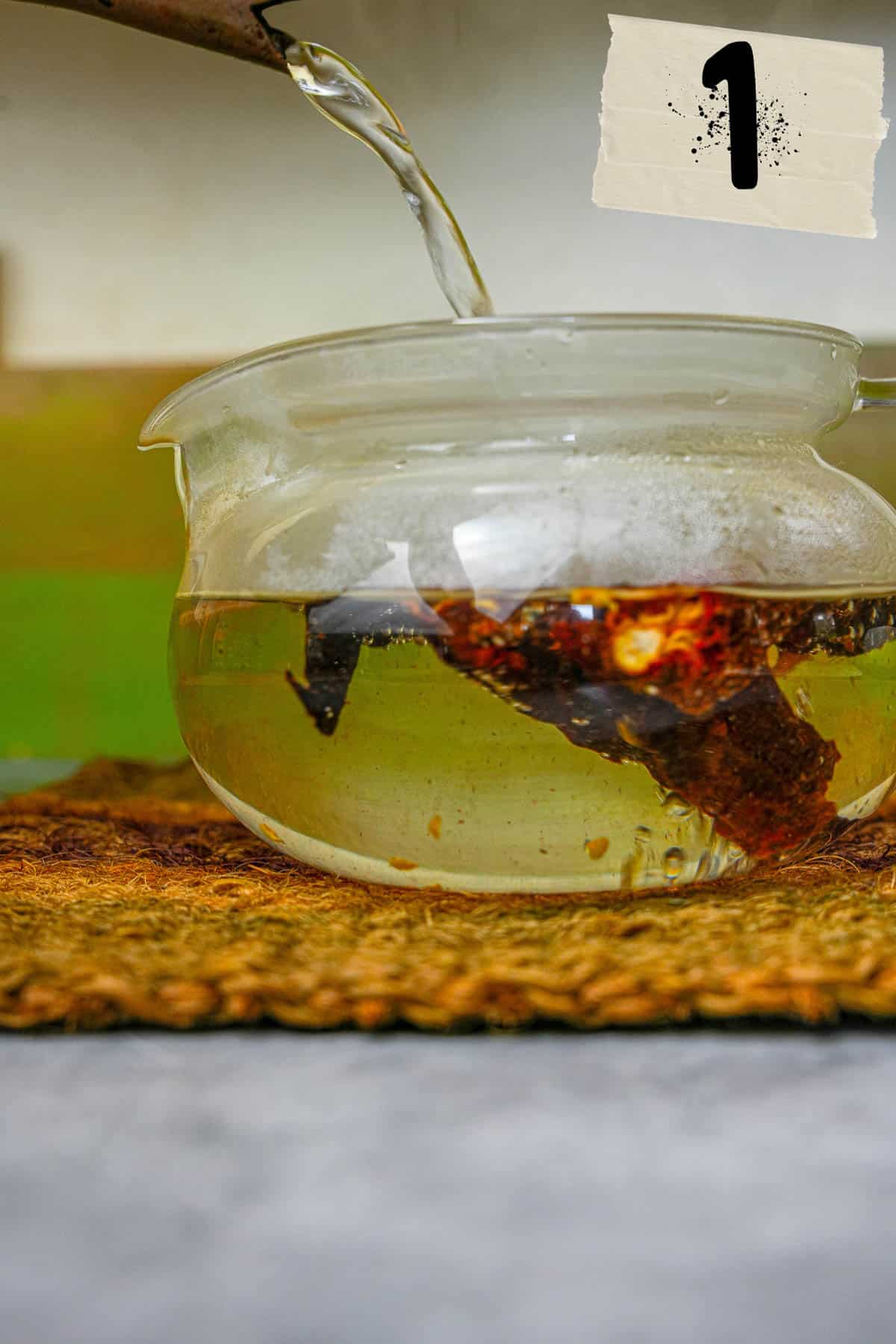
Step one
De-stem the dried chilies, and if desired, you can shake out the seeds. Then place them into a bowl and cover with boiling water.

Step two
Place a plate over the bowl and allow them to rehydrate as they cool for 20 minutes.

Step three
Snip the stems off your bird’s eye chilies. Again, you can remove the seeds here if you like. I’m personally too lazy for that, and I really don’t find the seeds objectionable, but you do you, as the kids say these days. 👴

Step four
Remove the dried-up external leaves of the lemongrass. Very thinly slice the fresh lemongrass, which will make it a lot easier to end up with a smooth final product.

Step five
Place all of the ingredients into a blender, mortar and pestle, or food processor.

Step six
Blend for 60-90 seconds, or grind by hand thoroughly in a mortar and pestle until you have a smooth reddish paste.
A spoonful of this tom yum paste added to my roasted carrot lentil soup is what heaven tastes like.
🍽️Serving Ideas
Now that you've mastered the art of crafting your own tom yum paste, it's time to explore the world of bomb vegan dishes that it can elevate to new heights.
Add a dollop of tom yum paste to Khao Pad, or Pad Wood Sen, a classic Thai noodle dish. It can also elevate the peanut sauce in Ketoprak, a street food tofu and rice noodle salad from Jakarta. Add a dab to make sambal goreng tempeh go freaking sideways in the most rad way!
Use tom yum paste as an alternative to red curry paste in vegan tom kha soup.
Tom yum paste can hook up to grilled or stir-fried veggies or to top mi xao xi dau with. You can tweak a lot of Vietnamese dishes by using tom yum in place of, or in addition to nuoc mam. The paste adds an awesome twist to noodle dishes like khao suey, bami goreng, mee rebus, and mie goreng.
Use tom yum paste as a marinade for homemade seitan before you turn it into a Thai-inspired vegan fried chicken, which you can serve with homemade kimchi or Korean spicy cucumbers over kimchi fried rice or Indonesian pandan-scented coconut rice.
Intensify Lontong Sayur Lodeh, with a spoonful of tom yum paste, or use it as an alternative to miso dressing in Nasu Dengaku which you can serve with pickled burdock and tofu katsu.

👉Top tips
- Soak and Soften: Take your time to soak the dried red chili peppers until they become soft and pliable. Use good quality dried peppers that aren’t so old that all that remains is a flavorless, lifeless shape of a pepper.
- Ginger vs. Galangal: If you can't find galangal, either fresh or dried, ginger makes a worthy substitute, but be aware that they have distinct flavor profiles. Experiment and find the taste that suits your palate.
- Mellowing the Heat: If you prefer a milder paste, remove the seeds from the dried red chili peppers and bird's eye chilies before blending. You can of course, use fewer fresh bird's eye chilies to tone the heat down a bit.
🤷♀️FAQ
Tom yum paste contains no wheat-based ingredients, so it’s safe for those following a gluten-free diet.
If you are following a strictly oil-free diet, you can leave the oil out. However, if you intend to stir fry the curry paste, having a little fat “built-in” helps that processes happen more actively.
It freezes and thaws great! I recommend freezing it first in an ice cube tray so that it’s easy to thaw. Use just what you need, rather than being stuck with a giant curry ice block.
To keep your tom yum fresh and ready for culinary adventures, transfer it to an airtight, sterilized glass container. Store it in the refrigerator, where it will remain at its best for up to one week. The cold temperature helps preserve its vibrant flavors. It ensures it's always within reach whenever you need a burst of Thai deliciousness.
Tom yum paste is a full-on flavor ambush. Think sour, spicy, and citrusy, all at once. This authentic Thai paste layers in lemongrass, kaffir lime, galangal, and fiery chilis to bring the iconic kick of tom yum goong to life. If your taste buds could high-five, they would.
Both are essential Thai pastes, but they live in different flavor universes. Red curry paste is creamy, earthy, and loaded with warm spices like cumin and coriander. Tom yum paste, on the other hand, is all about chilis, lime, lemongrass, and galangal taking the lead. It's the go-to for that unmistakable tom yum tang, especially in tom yum goong or other yum goong soups. So no, they’re not interchangeable, but both are non-negotiable if you're serious about Thai cooking.
Ready for a flavor bomb in your wok? Just sauté your veggies, tofu, or noodles in a splash of oil. Then stir in a spoonful of tom yum paste. Let it coat everything in its Thai goodness. Add a squeeze of lime and a handful of herbs if you’re feeling extra. It’s like throwing a tom-powered flavor party for your stir-fry.
Most Thai Taste Tom Yum Paste recipes keep it real with authentic Thai ingredients. These include lemongrass, galangal, kaffir lime, chilis, garlic, and shallots. Some add a touch of sugar and tamarind for that signature sweet-sour yum balance. Tom yum paste is a ready-made shortcut to tom yum goong, minus the measuring and mess.
✌️Use vegan tom yum paste in these:

TOM YUM PASTE (Vegan Thai curry paste recipe)
Equipment
Ingredients
- 10 dried red chili peppers seeds removed and soaked in hot water until soft
- 6 bird’s eye chilies red Thai chilies, stems removed
- ½ cup lemongrass 1 ½ to 2 stalks, thinly sliced
- 2 tablespoon grated galangal
- 4 cloves garlic minced
- 1 shallot medium size, peeled and quartered
- ½ cup chopped fresh cilantro
- 8 makrut lime leaves central stems removed
- ½ teaspoon white pepper
- 2 teaspoons ground coriander
- ¼ cup tamarind concentrate
- 3 tablespoons coconut sugar brown sugar, or another dry granulated sweetener of your choice
- ¾ teaspoon salt
- 3 tablespoon refined coconut oil sunflower oil, or canola oil
- ¼ cup lime juice
Instructions
- De-stem the dried chilies and, if desired, shake out the seeds. Place them in a bowl with boiling water, ensuring they are fully covered. Cover the bowl with a plate and allow them to rehydrate as they cool for 20 minutes.
- Snip the stems off the bird's eye chilies. Optionally, remove the seeds for a milder taste. Alternatively, leave the seeds for an extra kick. Your call!
- Remove the dried-up external leaves of the lemongrass. Thinly slice the fresh lemongrass, making it easier to achieve a smooth final paste.
- Place all the ingredients into a blender, mortar and pestle, or food processor. Grind until you get a smooth light reddish paste, rich in flavors and ready to elevate your dishes.
Notes
- For a less spicy paste, remove the seeds from the dried and bird's eye chilies.
- Soaking dried chilies in boiling water helps them rehydrate and blend more easily.
- Use a very sharp knife to thinly slice the lemongrass for smoother blending.
- If using a blender or food processor, add a little water to help with the blending process.
- In a mortar and pestle, grind the ingredients in batches to ensure a consistent and smooth paste.

Enter your email & I'll send it to your inbox. Plus, get great new recipes from me every week!
By submitting this form, you consent to receive emails from Cinnamon Snail.

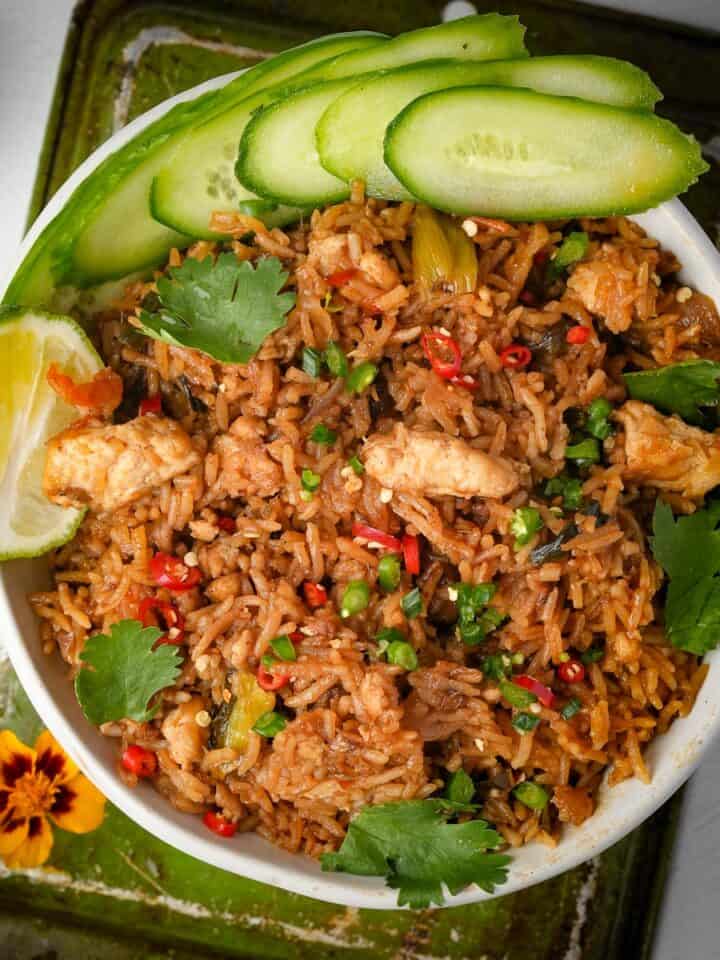
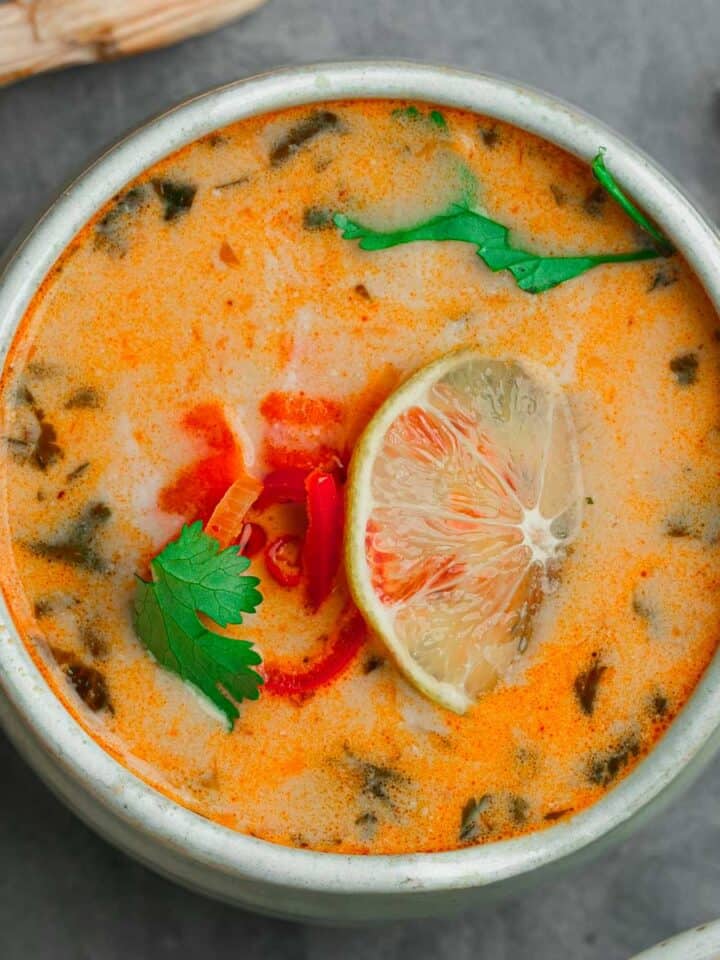
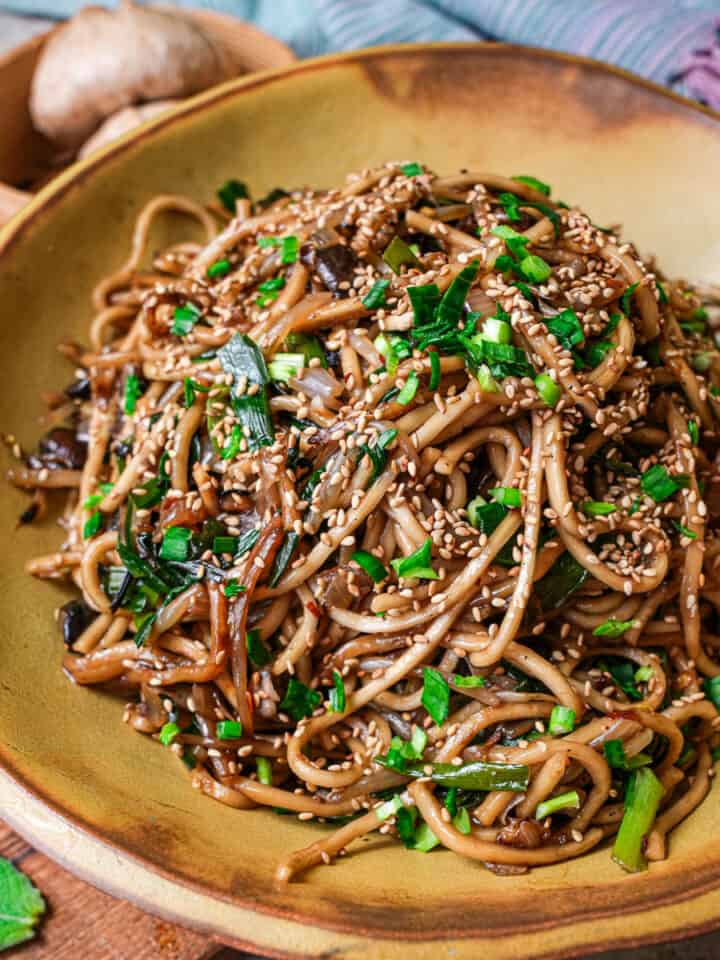
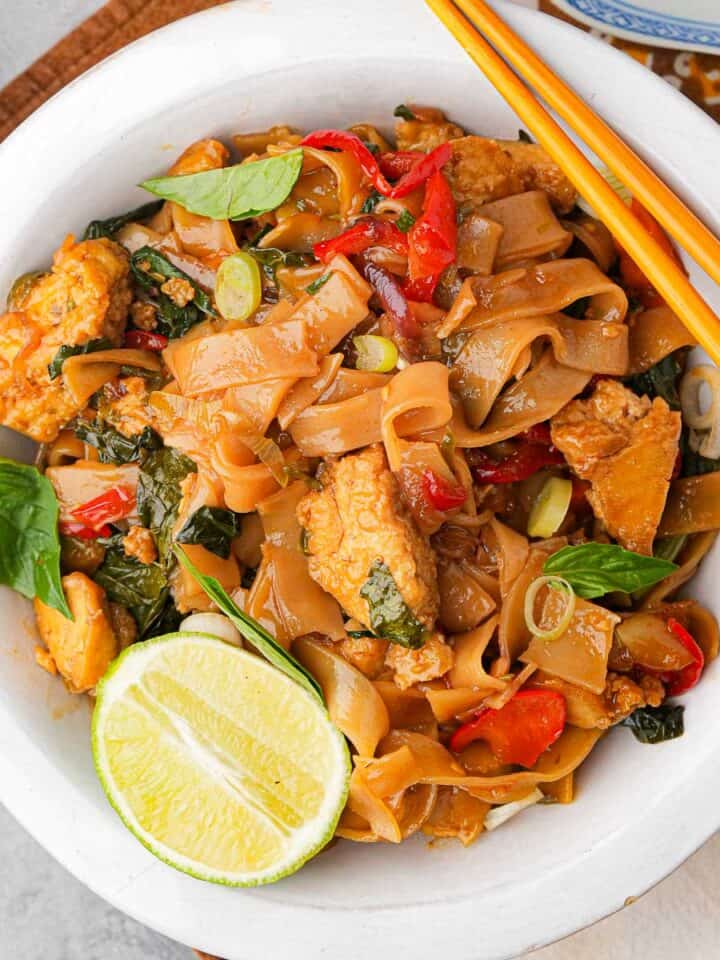
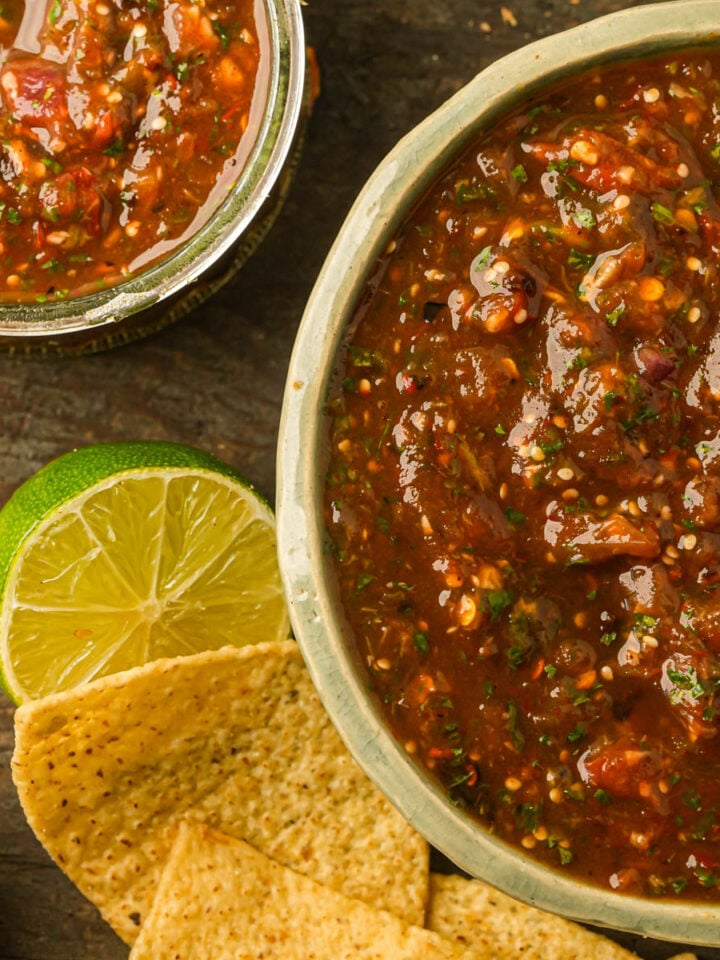

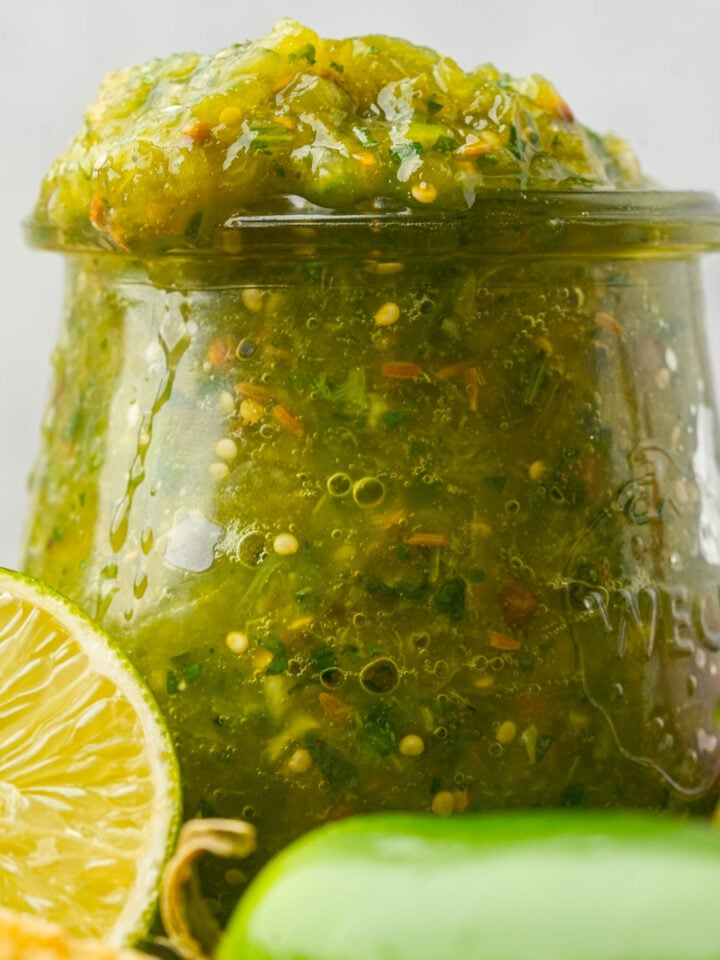
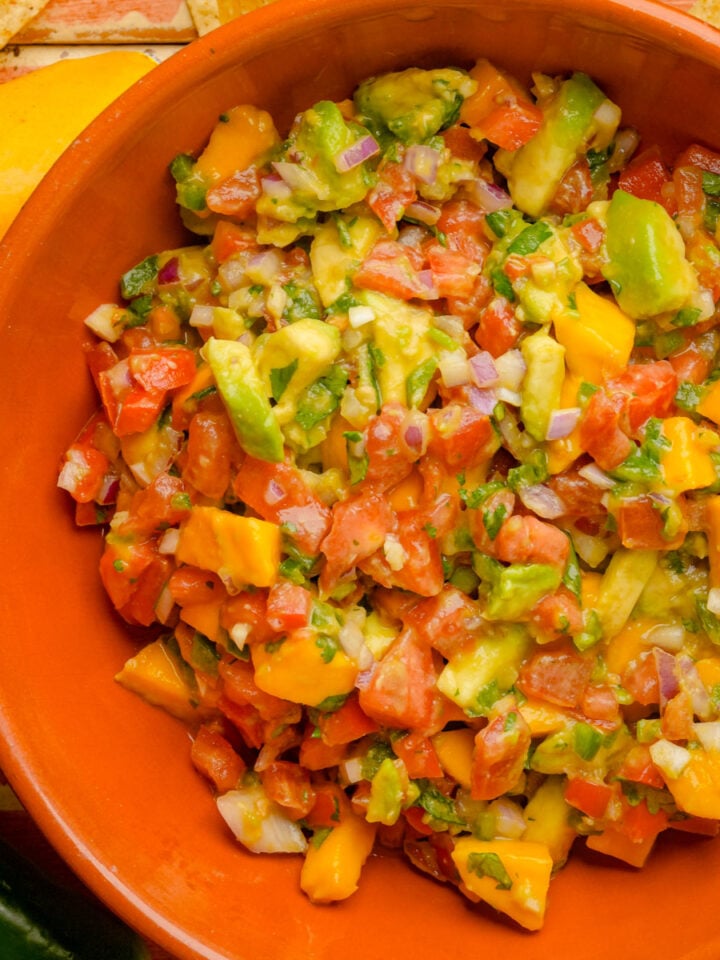
Maneesha Gagta says
Absolutely loving this Tom Yum paste recipe—so vibrant and well-balanced! I appreciate how clearly you’ve explained the steps, making it doable even for home cooks without access to Thai markets. I’ve been exploring similar bold, plant-based flavors at Mekhala Living, where I share recipes and tips for wholesome, mindful cooking—so this post really spoke to me. Thanks for sharing your delicious version of such an iconic dish!
Meg says
Oh oh oh! Fabulous! Delicioso!
And easy as. I discovered frozen galangal and frozen lemongrass. I made the fried rice with it and oh my gosh soooooo good. Thank you yet yet yet again, Chef Adam. You are the superstar of easy to read, easy to follow and wow wow wow taste recipes.
Linda says
Just made this and wowzer it is a keeper of a recipe! 🙂 My daughter helped me and it was so good she ate a spoonful of it right after mixing and called her brother to come taste it! So easy to make, I can't get hold of galangal where I live without online ordering so just made it with ginger, honestly this is so frickin good!
Adam Sobel says
So glad you loved this, Linda! Sometimes Asian food stores have galangal frozen. Anyway, its totally great as you made it, with extra ginger. I recommend tossing some into your next batch of homemade french fries, or making tom yum fried rice with it soon!
Hardish Verma says
Yes it is about time I nail this recipe
Cynthia J Steiner says
Great recipe with easy to follow steps. Love the details about specific chili varieties and how to rehydrate, plus important info in galangal usage and lemongrass. Very exciting because this stuff is sooo good!!
Adam Sobel says
So glad you loved the recipe. Thanks for your kind words Cynthia ❤️